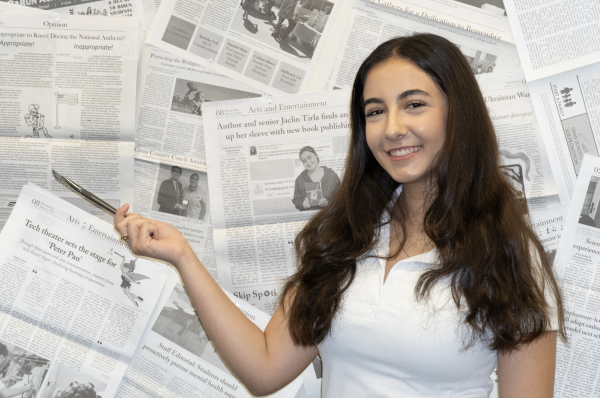Include All Sizes, Not Just One
Clothing companies have been caught multiple times enforcing toxic body images for many groups, including women. The idea of a “perfect” body often forces girls and women to push themselves in order to conform to this standard. “I mean, it starts with your own thinking and feeling you shouldn’t have to feel like you need to fit into a smaller size or larger size, to feel pretty or to feel beautiful” sophomore Dea Gupta said. “Just accepting your own body and liking yourself- it should be enough for you.”
Rows and rows of petite-size clothing. This image makes up the popular fashion brand named Brandy Melville. The “perfectly thin” image has plagued my mind and though I try to wash it down with “body positivity” it is a difficult idea to get rid of.
While some may claim that those with full-figured or petite bodies can shop at other stores, people of varying body sizes should not be stripped of an opportunity to shop at a store simply because the company refuses to sell anything other than one size.
“There’s a lot of fast fashion out there, and it’s always designated to one size,” costume designer and junior Kori Martinez said. “And like, ‘one size fits all,’ but doesn’t fit all. It’s really compromising.”
With the modern age of rapidly-changing trends, social media only adds to this worsening problem. Trends and edited photos promote unrealistic body images. The National Library of Medicine conducted a survey of 227 female college students and found that the students who spent more time on apps such as Facebook are more concerned about their bodies because they compare their appearances to others.
For women, the average size ranges from a U.S. size 14 to 18; however, for a majority of companies, sizes only extend until size 10. Increasing the range of inclusive sizes will allow girls and women of all sizes to express themselves through clothing without feeling “abnormal.”
“Just by selling them, you’re gonna get more customers,” sophomore Dea Gupta said. “I don’t see why they don’t do it. They just don’t sell them.”
Fashion and clothing should be for everyone. There is no reason for any body type to be excluded and for anyone who does not fit the “ideal” body type to feel bad about themselves.
As for Brandy Melville itself, the company needs to diversify the message it is trying to promote. Brandy Melville’s advertisements and websites need to display people of varying body sizes. Additionally, the company should work to diversify its workers and ensure there are not people being hired simply because of their “ideal” body types.
“It isn’t real, like the perfect body in its entirety,” Gupta said. “It’s just a made-up concept made to sell more clothes, trying to get you to buy a product.”
To expect teens or women of all ages to maintain a certain body size is ridiculous. After all, clothes are made to fit people, and people are not made to fit clothes.
Your donation will support the student journalists of Portola High School. Your contribution will allow us to purchase equipment and cover our annual website hosting costs.

Shaina Taebi is the Backpage Editor for her third year in the Portola Pilot. For her final year she is excited to spend class time drawing more editorial...




